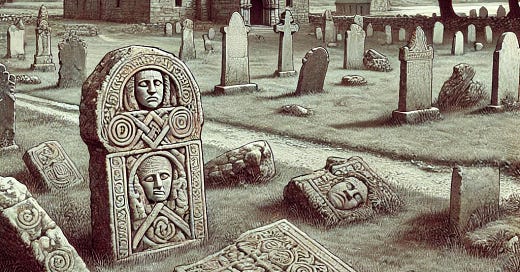What Happened to the Ancient Stones of Tarbat?
Scotland's rich history is etched in stone—literally. Across the country, sculptured monuments and standing stones tell tales of ancient peoples, their beliefs, and their artistic achievements. Among the most celebrated regions for these enigmatic artifacts is Easter Ross, home to iconic works such as the Nigg, Hilton, and Shandwick stones. However, one site in particular, Tarbat, harbors a poignant reminder of the fragile nature of these connections to the past. Many of its ancient stones have vanished, their whereabouts unknown or their beauty erased by time and human intervention. What happened to these missing stones? Why are they so important, and what can their loss teach us about preserving heritage?
Tarbat’s Historical Significance
The Tarbat Peninsula, a striking landscape of rolling hills and coastal views, was once a hub of early Christian activity and Pictish culture. The area holds special significance as one of the key regions where the Picts—the mysterious, indigenous people of early Scotland—left their mark in stone.
Historically, Tarbat’s sculptured stones served as religious markers, memorials, and possibly as territorial symbols. Many bore intricately carved Christian crosses, reflecting the Picts’ eventual conversion to Christianity. Others depicted enigmatic symbols unique to Pictish art, including crescents, Z-rods, and abstract patterns, whose meanings remain subjects of debate among archaeologists and historians.
The Vanished Stones of Tarbat
While Tarbat once had its share of these ancient stones, today, few remain intact, and many are missing entirely. Among the most notable is the fragmented stone cross that once stood proudly in the center of Tarbat Churchyard. According to historical accounts, this artifact was toppled by a gravedigger, its pieces repurposed as gravestones. This act of utilitarian destruction was unfortunately not an isolated incident; it reflects a broader trend in the history of Scotland's sculptured stones.
During periods of agricultural and infrastructural expansion in the 18th and 19th centuries, ancient stones were often viewed as convenient sources of building material. Large, flat stones like those in Tarbat were especially prized for constructing walls, homes, and even roads. In the absence of a cultural appreciation for these artifacts at the time, many were dismantled, destroyed, or carted away to unknown destinations.
Why the Stones Went Missing
1. Practicality Over Preservation
For much of history, the practicality of ancient stones often overshadowed their historical or artistic significance. In an era when labor and resources were scarce, reusing large, durable stones for construction made sense to local farmers and builders. Unfortunately, this pragmatism led to the loss of countless artifacts, including many in Tarbat.
2. Lack of Awareness
Before the 19th century, there was little widespread understanding of the value of Pictish stones. Many communities saw them as relics of a bygone era, with no particular connection to their contemporary lives. The intricate carvings, while admired by some, were often misunderstood or dismissed as mere decoration.
3. Natural Forces
Time and weather have also played a role in the disappearance of Tarbat's stones. Exposed to Scotland's harsh climate, many stones eroded over centuries, their carvings fading or becoming illegible. Others toppled and were buried, lost beneath layers of earth or vegetation.
4. Historical Conflicts
The area around Tarbat, like much of Scotland, experienced significant upheaval during the Viking invasions and later during clan conflicts. It is possible that some stones were deliberately destroyed or displaced during these turbulent periods as symbols of rival authority or as casualties of indiscriminate destruction.
The Importance of Tarbat’s Missing Stones
1. Historical Context
Each missing stone represents a gap in Scotland's historical record. Pictish stones are among the few surviving artifacts of this enigmatic culture, offering clues about their religion, societal structure, and interactions with early Christian missionaries. The loss of any artifact diminishes our understanding of this crucial period.
2. Artistic Achievement
The stones of Tarbat, like those of neighboring sites, were masterpieces of early medieval art. Their carvings demonstrate extraordinary skill, combining geometric precision with dynamic, lifelike imagery. Every missing stone signifies a loss of artistic heritage.
3. Cultural Identity
These monuments were not just decorative—they were cultural markers, telling stories about the people who lived and thrived in Tarbat centuries ago. Their disappearance weakens the sense of connection to a shared Scottish identity rooted in ancient history.
Can They Be Found?
While some of Tarbat’s stones may be lost forever, there is hope that others could still be rediscovered. Buried fragments, reused stones, or forgotten collections in private hands occasionally surface, offering opportunities to reclaim parts of the past. Archaeological surveys, community projects, and advanced technologies like ground-penetrating radar could help locate hidden artifacts in Tarbat and beyond.
Recent efforts in Scotland have shown the power of community in preserving heritage. Projects such as the Pictish Arts Society’s conservation initiatives and the National Museum of Scotland's restoration work on Pictish stones have inspired a new appreciation for these ancient artifacts.





